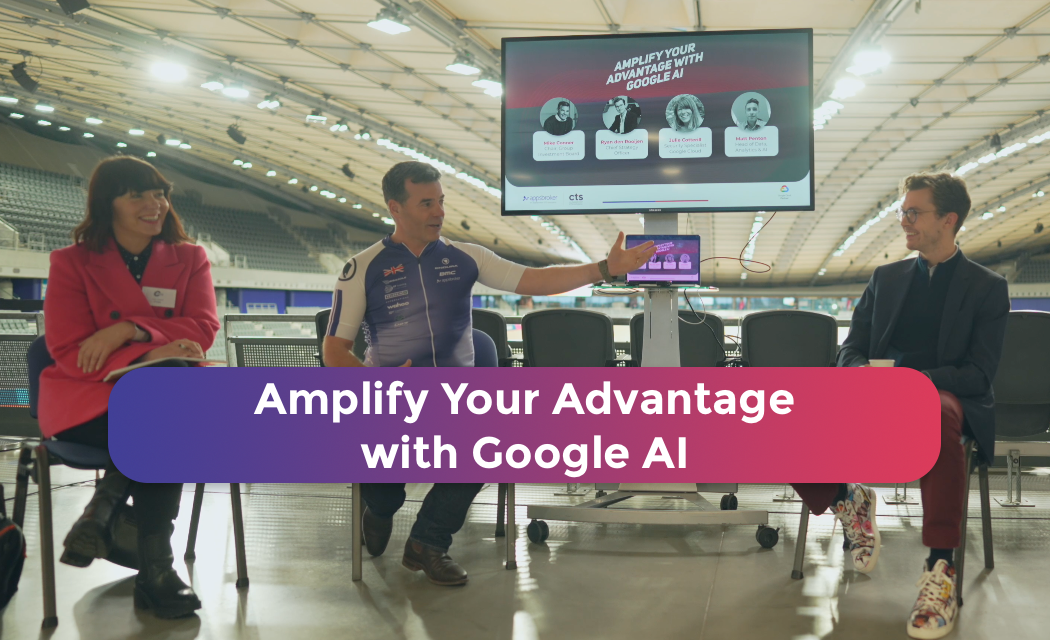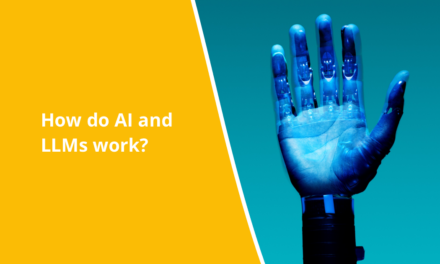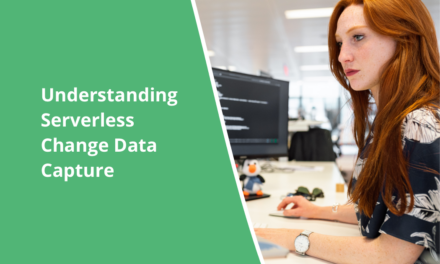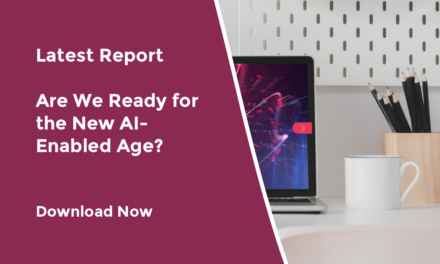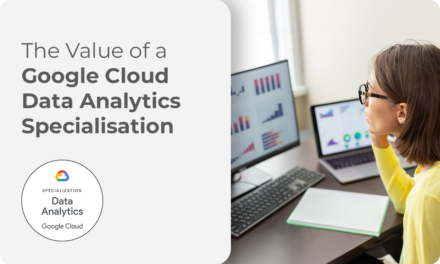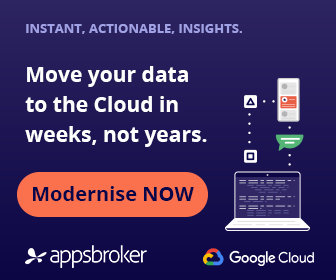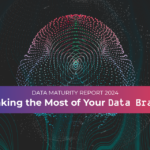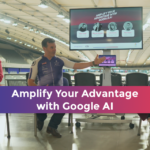Over the past 12 months, Gen AI has woven itself into the fabric of our daily routines. In a recent survey, a surprising revelation emerged: Over 41% of respondents assert that GenAI has already wielded a ‘major’ or ‘completely transformative’ influence on their respective businesses and industries. As we take bold strides forward in this new era, let’s delve into the influence GenA I is exerting on our lives and industries alike, and explore how it can be used as a force for good in business.
Watch our panel discussion on the topic of Gen AI from leaders in Security, Data & AI, and Google Cloud. The session was recorded in the middle of a 100-mile indoor world record attempt at the Lee Valley VeloPark (Olympic Velodrome) by amateur cyclist and Google Cloud Customer Engineer James MacDonald. This feat of human endurance was powered by Google AI, and proudly supported by Appsbroker & CTS.
Hit play on the video below to watch the session in full, or read excerpts in this blog in the section below.
Does AI create superpowers for bad people?
“From a security perspective, it has the potential to enable criminals to potentially write better phishing emails,” explains Julie Cotterill, Security Specialist at Google Cloud. “But sophisticated threat actors aren’t going to be doing that. What could escalate things is the ability to scale and weaponise malware development, but the Mandiant acquisition now means Google Cloud can draw on more than fifteen years of threat intelligence, with continual tracking of threat actors globally.
What we’re seeing is not so much of an uptick in the use of AI with threat actors that we track and follow, but more how Chinese cyber criminals are exploiting deep fake technology. But there are lots of things that can be done to mitigate that risk.”
What does Mandiant offer Google Cloud customers?
According to Julie: “The acquisition of Mandiant was kind of one of the largest that Google Cloud made back in 2022. And I think, you know, the main reasons why Mandiant was so attractive was really to do with the instant response and frontline trace intelligence experience that Mandiant still has today.
For example, we do over 200,000 hours every year of instant response, and that’s frontline IR that our consultants are going out and working with customers on. What we learn as a result adds a significant depth to our threat intelligence thanks to nearly 400 analysts based globally that track threat actors every day, and turn that into operationalised and actionable threat intel that customers can use. If you were to layer those results with AI you can operationalise your data to create a powerful proposition.
We built a large language model that’s purely for security, so what that means is taking Mandiant threat intelligence and adding in things like open source intel, MISO attack frameworks and other things to create a model trained specifically for security practitioners. This in turn enables and upskills the customer workforce.”
How are the specialist large language models proving to be transformative?
Med-PaLM is a great example”, explains Matt Penton, Head of Data, Analytics and AI at Appsbroker & CTS.” It’s a large language model developed by Google Research, and specifically tailored for the medical field. Its primary function is to deliver precise and reliable answers to medical inquiries. The upgraded version, Med-PaLM 2, forms part of the MedLM series—a group of foundational models optimised for healthcare applications.
Google Cloud customers now have access to MedLM, enabling them to utilise its wide-ranging capabilities, from basic functions to intricate workflows. The ability to train this model using anonymised patient data leads to powerful, ready-to-use solutions and is an incredible tool to use.”
What project success have we seen using LLMs to-date?
We did a project recently about classifying emails, with over 2,000 inquiries being sorted manually by 10 people a day. Using LLMs we reduced that process down to less than 4 minutes with a near 95% success rate.
So it’s the speed at which customers can develop and improve their operational performance straight out of the gate using Google tools that is fascinating. Our role is to help customers utilise this technology and fine-tune it as it adapts to the business.
One of the most exciting aspects is the speed at which these solutions are developing. The desire to iterate and innovate at pace is pushing businesses towards greater levels of competitiveness. And as a Premier Google Cloud partner, we want to help you there faster than the rest.
What types of conversations are business leaders wanting to have about Gen AI?
The good news is that a lot more people are more informed about technology than they were, say, a generation or two ago,” reveals Ryan den Rooijen, Chief Strategy Officer at Appsbroker & CTS. “It’s part of everyday conversations at some level which helps open doors to the art of the possible.
We know that Enterprise organisations want tailored solutions, often to address a very specific set of challenges in very narrow verticals that are often causing friction internally, which creates issues that can become systemic if technology isn’t front and centre when it comes to problem-solving.
Let’s take natural language translation as an example. Google Translate is pretty much perfect but how does it become a business solution? Our role is to listen to business leaders and provide an impact-driven context that they can relate to. Our best-in-class engineering solutions work with our project management team to build a roadmap for tech success that empowers future growth.
To sump it all up, a lot of our efforts are focused on helping leading organisations to put the finger on pain points and allow us to make improvements as simply and efficiently as possible using Google Cloud.
For further reading, check out Why We Focus on AI by Google Cloud.

